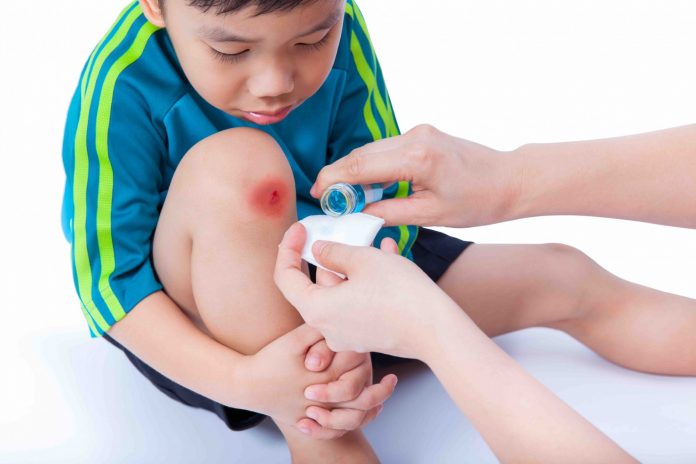Bumps and bruises are an unavoidable part of childhood. With one in four children, and one in five adults experiencing chronic pain, pain management is a vital public health topic.
In fact, teaching children about pain when they’re young can help them better understand and respond to pain when they’re older.
A new study from the University of South Australia (UniSA) has revealed five key approaches that parents and caregivers can use when talking with young children about pain, which can help with their recovery and resilience after injury.
Lead researcher, UniSA’s Dr Sarah Wallwork, says parents and caregivers likely play a critical role in helping children learn about pain.
“Whether it’s falling from a bike or dealing with the often-dreaded vaccinations, everyday pain experiences are opportunities for parents to promote positive pain-related beliefs and behaviours,” says Dr Wallwork.
In this study, which was published in the European Journal of Pain, researchers investigated everyday pain in young children (aged 2 to 7 years), asking experts from child health, psychology, development and resilience areas, as well as parents and educators, what they thought would promote children’s recovery and resilience after minor pain or injury.
With 80% consensus across all experts, the most important messages are to:
- Teach children about the meaning of pain – pain is our body’s alarm system.
- Validate children’s pain – ensure they feel safe, heard, and protected, but don’t make a fuss.
- Reassure children after an injury – let them know that their body will heal, and the pain will pass.
- Support children’s emotions – let them express themselves but encourage them to regulate.
- Involve children in their recovery – encourage them to manage their pain (eg. get a bandaid).
“While it’s important to teach children that pain is our body’s alarm system and that it’s there to protect us, it’s equally important to understand that pain and injury do not always align,” says Dr Wallwork.
“In children, pain can be influenced by their emotions – for example, fear, hunger, or tiredness can exacerbate symptoms, even though this is not pain itself.
“Teaching children that they can have some control over their pain – and that how they feel on the inside can influence this – empowers them to actively engage with their own pain management,” she says.
Dr Wallwork says that teaching children about pain can be done in an age-appropriate way. For example, she says, “for a very young child, empowerment might be getting a bandaid or a wet cloth, rubbing the area and distracting them, then telling them their injury is protected by the bandaid and that it is now safe to move and play”.
“For an older child,” she says, “the process can be more involved.”
According to Dr Wallwork, the key is to demonstrate to the child that they can be actively involved in their healing process.
“By helping children learn about pain when they are young, we’re hoping to promote lifelong, helpful, pain behaviours that will actively encourage recovery and prevent future pain problems,” she says.










